
70s Hippie Dress Style
The Hippie dress became popular during the 1960s and 1970s counterculture movement known as the hippie movement. A hippie dress typically embodies a relaxed, free spirited bohemian aesthetic.
A hippie dress is often loose fitting and comfortable. Allowing for freedom of movement and a relaxed attitude toward fashion. This bohemian dress reflect the free spirited ethos of the era.
Hippie dresses were heavily influenced by bohemian fashion, which emphasized natural fabrics, flowing silhouettes, and eclectic patterns. The hippie movement embraced this style as a rejection of mainstream fashion norms.
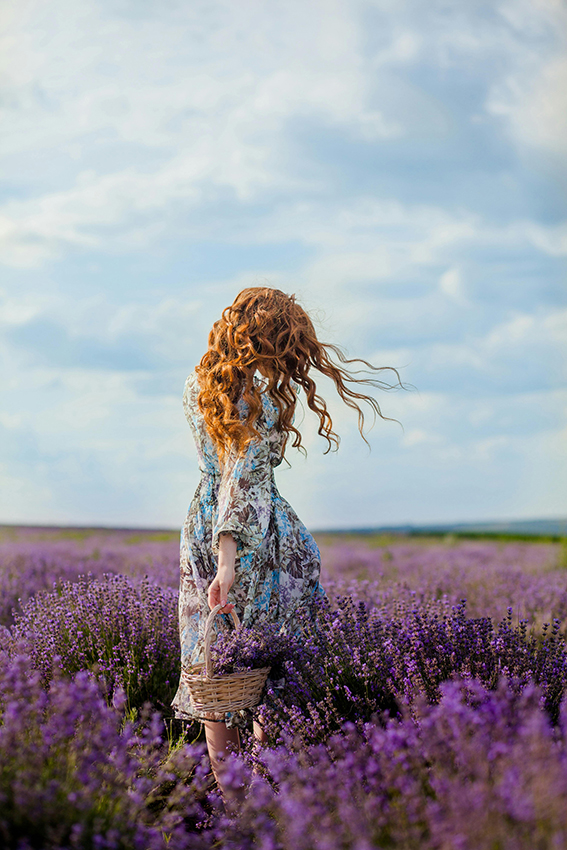
Flowy Hippie Dress
The flowy loose silhouette of a hippie dress is one of its defining characteristics, reflecting the free-spirited and relaxed vibe of the hippie girls. Allowing for freedom of movement.
It can be maxi length (reaching the ankles) or midi length (falling below the knee).
The flowy hippie dress silhouette is all about embracing comfort, freedom, and self-expression, embodying the carefree bohemian spirit.
Here’s more details about what makes the silhouette of a hippie dress:
Loose and Relaxed Fit in Hippie Dresses:
- Hippie dresses typically feature a loose and relaxed fit that drapes gently over the body, rather than clinging tightly. This loose fit allows for ease of movement and comfort, making hippie dresses ideal for casual, everyday wear.
A-Line or Empire Waist:
- Many hippie dresses have an A-line or empire waist silhouette. An A-line silhouette is fitted at the bodice and then gradually flares out toward the hem, creating a flattering shape that skims over the hips and thighs. Empire waist dresses have a high waistline that sits just below the bust. With a loose, flowing skirt that falls from this point, it is creating a lengthening effect and emphasizing the bust.
Maxi Length Hippie Dress:
- While not exclusive to hippie dresses, maxi length (floor-length) dresses are quite common in hippie fashion. Maxi dresses have a long, flowing skirt that reaches the ankles, adding to the overall flowy and bohemian aesthetic. This length of dress enhances the graceful movement of the fabric as the wearer walks or moves.
Soft and Lightweight Fabrics:
- Flowy hippie dresses are often made from soft, lightweight fabrics such as cotton, chiffon, rayon, or linen. These fabrics have excellent drape and movement, allowing the dress to flow and sway with the wearer’s movements.
Tiered or Ruffled Skirts:
- Some hippie dresses feature tiered or ruffled skirts, which add volume and dimension to the silhouette. These details enhance the flowy nature of the dress, creating a whimsical and romantic look.
Layering:
- Layering is a common styling technique in hippie fashion. And flowy hippie dresses can be layered with other garments such as vests, cardigans, or shawls. This adds visual interest and allows for creative expression while maintaining the overall flowy silhouette of the dress.
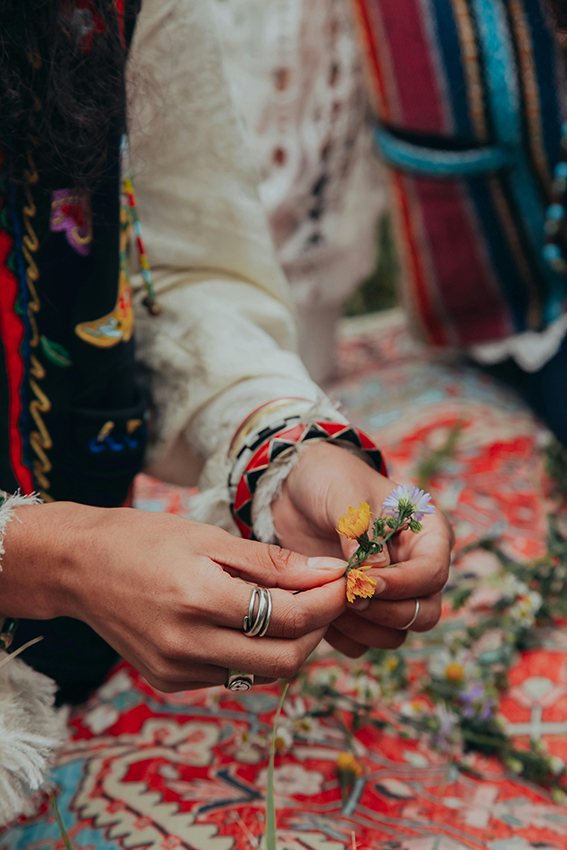
Embroidery and Embellishments on a Hippie Dress
Many hippie dresses featured intricate embroidery, beading, or other embellishments, often inspired by traditional folk art from around the world. These details give a unique, handmade touch to the hippie dress. Adding a touch of artistry, individuality, and bohemian charm to the hippie dresses.
Embroidery and embellishments on hippie dresses serve to elevate the garment from simple clothing to wearable art. They contribute to the eclectic and individualistic style of boho fashion. Celebrating creativity, self-expression, and a connection to craft traditions from around the world.
” It is time to get creative in your dressing”…”Your body is your palette, let your outfit shine”
Here’s more details about these decorative elements:
Intricate Embroidery:
- Hippie dresses often feature intricate embroidery, which involves decorating fabric with thread in various colors and patterns. Common motifs in hippie embroidery include floral designs, geometric patterns, animals, and symbols inspired by nature or different cultures. The embroidery is typically done by hand, adding to the artisanal and handmade feel of the garment.
Handcrafted Details:
- Many hippie dresses incorporate handcrafted details such as hand-stitched embroidery, appliqué, or crochet work. These details are often labor-intensive and add a unique, one-of-a-kind touch to the dress. Handcrafted elements reflect the hippie movement’s emphasis on DIY culture and craftsmanship.
Beadwork and Sequins makes your Hippie Dress Interesting:
- Some hippie dresses feature beadwork or sequins as embellishments. These shiny and decorative elements add sparkle and visual interest to the garment, creating a bohemian-luxe aesthetic. Beadwork and sequins may be used to accentuate specific areas of the hippie dress, such as the neckline, sleeves, or hem.
Tassels and Fringe for Moore Interest:
- Fringe and Tassels are popular embellishments in hippie fashion, adding movement, texture, and playful whimsy to the hippie dress. Fringe and tassels may be attached to the hem, sleeves, or neckline of the dress, creating a dynamic and eye-catching look.
Hippie Dress Patchwork:
- Patchwork is another common embellishment seen in hippie dresses. It involves stitching together pieces of fabric in different colors, patterns, and textures to create a cohesive design. The details of patchwork can be applied to various parts of the hippie dress, such as the bodice, skirt, or sleeves, resulting in a visually striking and eclectic effect.
Bohemian Trims for Hippie Girls:
- Hippie dresses may feature bohemian-inspired trims such as lace, ribbon, or pom-poms. These trims add a romantic and feminine touch to the garment, enhancing its bohemian aesthetic. Lace trim, for example, can be used to embellish the neckline or hem of the hippie dress. While ribbon or pom-pom trim can be added to sleeves or waistlines for a playful accent.
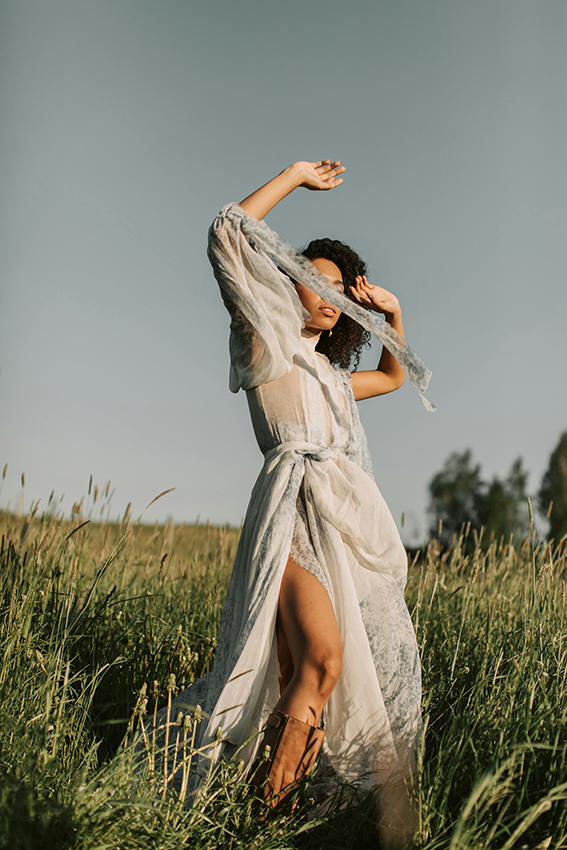
Long Hippie Dresses
Long hippie dresses, often referred to as maxi dresses, capture the essence of the hippie movement with their flowing silhouettes, bohemian prints, and artisanal details. They embody the spirit of individuality, creativity, and nonconformity. And continue to resonate with fashion-conscious hippie girls of today.
“Imagine wearing a pretty, flowy hippie dress that moves in the wind. The colors make you as happy as the sun, and it gives you a nice, relaxing feeling. Take it chill or let the party begin; it’s your choice :-)”
Long, flowing maxi dresses were particularly popular among hippies. These dresses often featured bold, psychedelic prints or tie-dye patterns, reflecting the psychedelic aesthetic of the era.
Here’s more detail about long hippie dresses:
A Hippie Dress Flowing Silhouette:
- Long hippie dresses typically feature a flowing silhouette that extends to the ankles or floor, creating a graceful and ethereal look. The loose and relaxed fit of these dresses allows for ease of movement and comfort. Making them ideal for the laid-back, free-spirited vibe of the boho lifestyle.
Bohemian Prints and Patterns:
- Long hippie dresses often showcase bohemian-inspired prints and patterns. Such as psychedelic designs, floral motifs, tie-dye patterns, paisley prints, or ethnic-inspired patterns. These bold and eclectic prints were a hallmark of hippie fashion. They are reflecting the era’s embrace of artistic experimentation and individual expression.
Natural Fabrics in Hippie Dresses:
- Like other hippie garments, long hippie dresses are typically made from natural fabrics, such as cotton, linen, or hemp. These breathable and comfortable fabrics align with the hippie movement’s emphasis on environmental consciousness and connection to nature.
Embroidery and Embellishments:
- Long hippie dresses may feature intricate embroidery, beadwork, or other embellishments, adding a bohemian-luxe touch to the garment. These embellishments contribute to the dress’s artisanal and handmade feel, reflecting the hippie movement’s DIY ethos.
Layering Possibilities:
- Long hippie dresses offer versatile styling options. Allowing for creative layering with other garments such as vests, cardigans, or shawls. Layering adds visual interest and allows individuals to customize their look while maintaining the dress’s flowy silhouette.
Versatile Occasions to Wear a Hippie Dress:
- Long hippie dresses are suitable for a variety of occasions. Ranging from casual everyday wear to special events such as music festivals, concerts, or outdoor gatherings. Their effortless bohemian-chic aesthetic makes them a versatile wardrobe staple for those who embrace the hippie ethos. ” Are you going to wear a long flowy maxi dress today, or do you prefer a short sassy hippie dress instead?”
Timeless Appeal:
- Despite originating in the 1960s and 1970s, long hippie dresses continue to have a timeless appeal and remain relevant in contemporary fashion. Their combination of comfort, style, and bohemian flair ensures that they endure as a beloved fashion staple for individuals seeking a laid-back and free-spirited look.
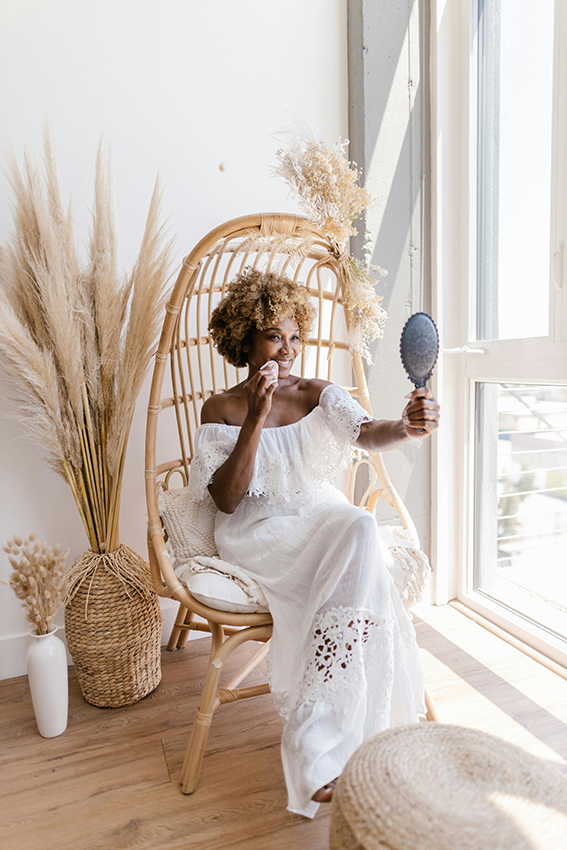
Hippie Dresses with Natural Fabrics
In keeping with the hippie movement’s emphasis on natural living and environmental consciousness, hippie dresses were often made from natural fabrics such as cotton, linen, or hemp.
This aligned with the desire for clothing that felt comfortable and connected to the earth.
The preference for natural fabrics in hippie dresses was driven by a combination of environmental, social, and aesthetic factors. By embracing natural materials, hippies expressed their commitment to sustainability, comfort, and connection to traditional craftsmanship. While also creating a distinctive and free spirited fashion aesthetic.
Here’s more detail about the significance of natural fabrics in hippie dresses:
Environmental Consciousness:
- Hippies of the era were often environmentally conscious and sought to live in harmony with nature. Natural fabrics such as cotton, linen, hemp, and wool were favored. Because they were renewable, biodegradable, and sustainable compared to synthetic materials like polyester or nylon. Choosing natural fabrics aligned with the hippie movement’s values of environmental sustainability and ecological awareness.
Comfort and Breathability of the Hippie Dress:
- Natural fabrics are prized for their comfort and breathability. That is making them well-suited for the relaxed, free-spirited lifestyle embraced by bohemians. Fabrics like cotton and linen are lightweight and allow air to circulate. That is keeping the wearer cool and comfortable in warm weather. This was particularly important for hippies who often spent time outdoors at music festivals, communes, or gatherings.
Connection to Traditional Craftsmanship:
- People have used natural fabrics for a long time in traditional textile crafts such as weaving, spinning, and dyeing. By choosing garments made from natural fabrics, bohemians celebrated and supported traditional craftsmanship and artisanal techniques. Many hippie dresses featured handwoven fabrics or hand-dyed yarns, adding to their unique and handmade appeal.
The Aesthetic Appeal of a Hippie Dress:
- Natural fabrics offer a soft, tactile quality that enhances the aesthetic appeal of hippie dresses. Fabrics like cotton and linen have a natural texture and drape that complements the flowing silhouettes and bohemian prints commonly found in hippie fashion. Additionally, natural fabrics can be easily dyed using plant-based or low-impact dyes. That is allowing for a wide range of vibrant colors and patterns.
Health and Well-being:
- Some hippies were concerned about the potential health risks associated with synthetic fabrics, which may contain chemicals or toxins from the manufacturing process. By choosing clothing made from natural fabrics, bohemians sought to minimize their exposure to harmful substances and promote their overall health and well-being. If only moore people had listened to the hippies, the world would be a healthier place…

DIY Culture in Fashion Hippie Dress
Many hippies embraced a do-it-yourself (DIY) approach to fashion, creating their own clothing or customizing store-bought garments to suit their individual style.
the DIY approach to fashion was a hallmark of the hippie movement, embodying values of creativity, self-sufficiency, and rebellion against mainstream consumer culture. It allowed hippies to express themselves authentically through clothing while forging connections with like-minded individuals. Contributing to a more sustainable and socially conscious approach to fashion.
This DIY ethos extended to hippie dresses, with many individuals adding their own creative touches to their clothing.
The DIY (do-it-yourself) ethos extending beyond just fashion to various aspects of life including art, music, and living spaces.
When it came to fashion, many hippies embraced DIY as a means of self-expression, creativity, and nonconformity.
Here’s more details about the DIY approach to fashion among hippies:
Creative Expression:
- DIY fashion allowed hippies to express their individuality and creativity through clothing. Rather than adhering to mainstream fashion trends. Hippies preferred to create their own unique garments that reflected their personal style, beliefs, and interests. DIY clothing served as a form of self-expression and artistic experimentation.
Customization and Personalization:
- Hippies often customized or personalized store-bought garments to suit their preferences and aesthetic. This could involve adding embellishments such as embroidery, beads, or patches. Altering the fit or silhouette of the hippie dress, or repurposing existing clothing into something free spirited, new and unique. Customization allowed hippies to put their own stamp on their clothing and make a statement about their individuality.
Resourcefulness and Sustainability in Hippie Dress Fashion:
- DIY fashion aligned with the hippie movement’s values of resourcefulness and sustainability. Rather than constantly buying new clothing, hippies would repurpose old garments, thrift store finds, or discarded materials to create something new. This approach reduced waste and embodied a more environmentally conscious approach to fashion consumption.
Empowerment and Independence:
- DIY fashion empowered hippies to take control of their personal style and reject the dictates of mainstream fashion industry. By making their own hippie dresses, they asserted their independence from commercial fashion trends. That allowed hippies to celebrate the freedom to dress in a way that felt authentic and meaningful to them.
Community and Sharing:
- DIY fashion often fostered a sense of community and sharing among hippies. Many hippies would gather together to share skills, ideas, and materials for creating clothing. This sense of collective creativity strengthened social bonds and reinforced the communal values of the hippie movement.
Experimentation and Nonconformity:
- DIY fashion encouraged experimentation and nonconformity, allowing hippies to push the boundaries of traditional fashion norms and create their own distinctive free spirited looks. DIY hippie dress clothing often featured unconventional designs, materials, and techniques, challenging the status quo and celebrating individuality. Are you ready to create?
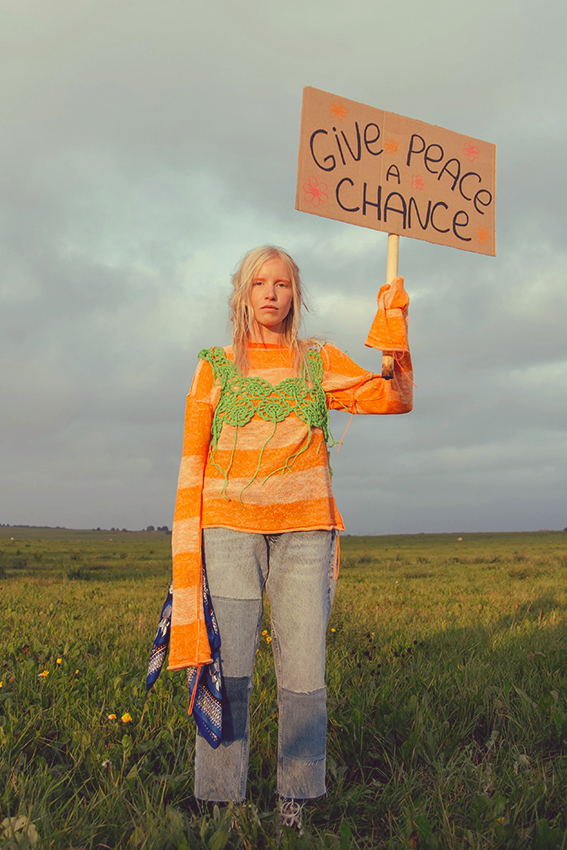
Hippie Dresses Countercultural Symbolism
Hippie dresses were not just a fashion statement but also a form of cultural expression. Beyond their aesthetic appeal they symbolized resistance to mainstream society and its values, embracing peace, love, and freedom as core principles in the hippie lifestyle .
By donning hippie dresses, individuals made a deliberate statement of defiance against mainstream societal norms and values. These dresses represented a rejection of materialism, conformity, and rigid social structures, opting instead for a philosophy rooted in inclusivity, empathy, and personal liberation. Are you following the same path?
A canvas for free spirited self-expression
Wonderful vibrant colors, flowing silhouettes, and eclectic patterns of hippie dresses mirrored the kaleidoscope of ideas and experiences embraced by the counterculture movement. Each garment became a canvas for self-expression, allowing wearers to convey their ideals and aspirations through fashion.
Moreover, hippie dresses fostered a sense of community and solidarity among like-minded individuals. They served as a unifying symbol, signaling allegiance to the values of peace, love, and freedom that defined the hippie ethos. In this way, hippie dresses transcended their status as mere clothing, becoming potent symbols of social and cultural resistance.
In essence, hippie dresses were not just articles of apparel; they were manifestations of a broader social and philosophical movement. Through their clothing choices, wearers proclaimed their allegiance to a vision of society built on compassion, creativity, and individuality. That was challenging the status quo and inspiring free spirited generations to come…
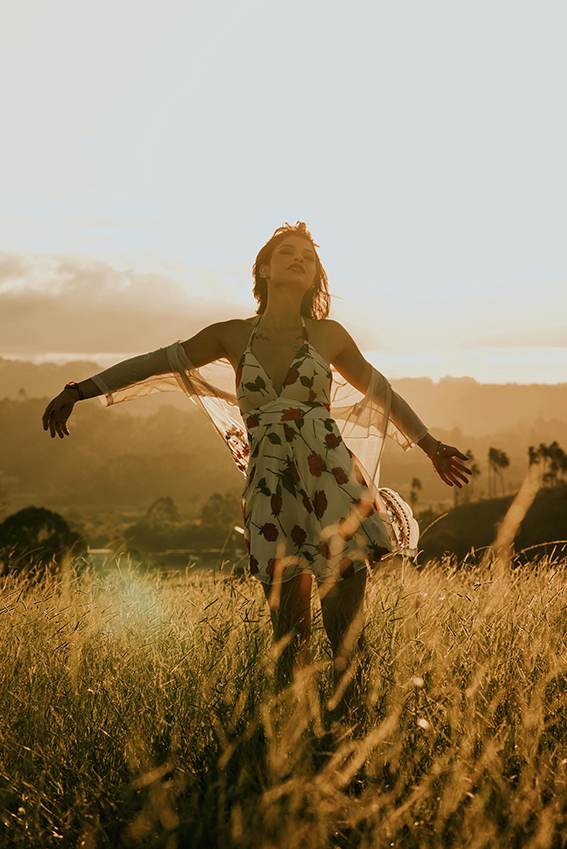
Hippie Dress Continued Influence
While the hippie movement may have emerged decades ago, its impact on fashion endures.
Did you know that ements of hippie style, including maxi dresses, bohemian prints, and a laid-back aesthetic, continue to inspire designers and resonate with consumers. That is ensuring that the spirit of the hippie dress lives on in contemporary fashion.
Elements of the boho style, including maxi dresses, bohemian prints, and a laid-back aesthetic, can still be found in contemporary fashion.
The continued influence of hippie fashion in contemporary style speaks to the enduring appeal of its key elements. They are including maxi dresses, bohemian prints, and a laid-back aesthetic. Tthe spirit of individuality, creativity, and freedom that defined hippie fashion lives on in modern clothing trends.
Chic Hippie Dress Ooze Timeless elegance
Maxi dresses, a staple of hippie fashion, remain popular today for their versatility and timeless elegance. These long, flowing garments evoke a sense of effortless chic and are a favorite choice for everything from casual outings to formal events. With their relaxed silhouettes and bohemian-inspired prints, maxi dresses capture the essence of the hippie dress. Offering a contemporary twist that resonates with modern sensibilities.
Bohemian prints, characterized by bold patterns, vibrant colors, and eclectic motifs, continue to be a defining feature of contemporary fashion. From paisley to floral to geometric designs, these prints add a playful and whimsical touch to clothing, including hippie dresses. Whether adorning flowing maxi dresses or breezy tunics, bohemian prints infuse garments with a sense of wanderlust and free-spirited charm that harkens back to the heyday of the hippie movement.
In addition to maxi dresses and bohemian prints, the laid-back aesthetic synonymous with hippie fashion remains a dominant influence in contemporary style. Casual, comfortable clothing that prioritizes ease of wear and relaxed silhouettes is a hallmark of modern fashion. Hippie dresses embody this laid-back ethos. Offering wearers the freedom to express themselves authentically while staying true to the values of peace, love, and freedom that defined the hippie era.
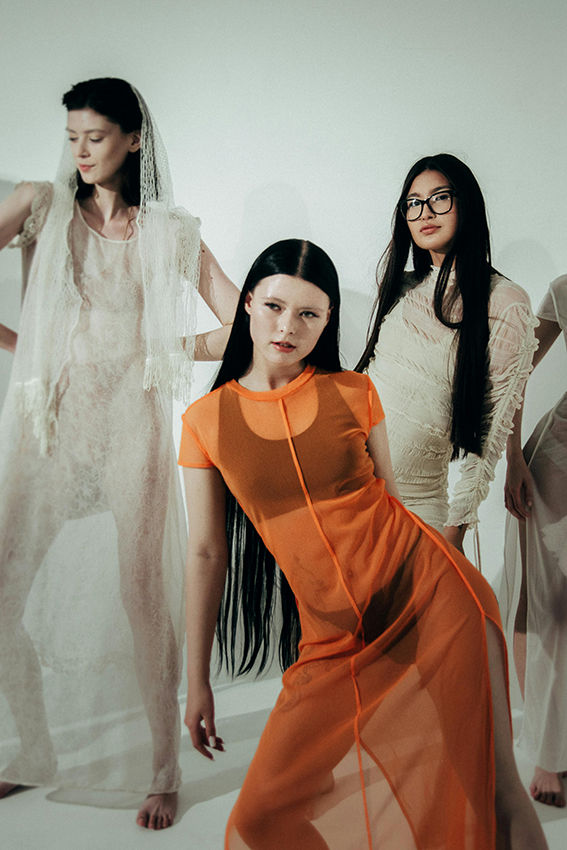
Famous Designers Love for Hippie Dresses
Famous designers have always had a deep appreciation for hippie dresses and the cultural significance they represent.
They have often drawn inspiration from the hippie aesthetic: Including hippie dresses, incorporating elements of bohemian style, free-spiritedness, and individuality into their collections. And reinterpreting it in new creative and exciting ways.
Here’s more about Famous fashion designers love for hippie dresses:
Embracing Bohemian Spirit in a Hippie Dress:
- Many renowned designers have been captivated by the bohemian spirit embodied by hippie dresses. They appreciate the freedom, creativity, and nonconformity inherent in hippie fashion, often infusing their own designs with these qualities.
Exploration of Craftsmanship:
- Hippie dresses, with their emphasis on handcrafted details and artisanal techniques, appeal to designers who value craftsmanship and authenticity. Famous designers often explore traditional textile crafts such as embroidery, weaving, and dyeing, incorporating these techniques into their interpretations of hippie dresses.
Celebration of Individuality for Hippie Girls:
- Hippie dresses celebrate individuality and self-expression, qualities that resonate with many designers. Famous designers often create collections that embrace diversity, allowing wearers to express their unique identities through clothing. Hippie dresses, with their relaxed silhouettes and eclectic prints, provide a canvas for this expression of individuality.
The Influence of the Hippie Dress on Runway Fashion:
- Famous designers draw inspiration from hippie fashion in their collections, and you can see the influence of hippie dresses on the runway. Elements such as maxi length, bohemian prints, and flowing silhouettes frequently make appearances in high-fashion shows, demonstrating the enduring appeal of hippie style.
The Hippie Dress Popularity Among Celebrities:
- Hippie dresses are often favored by celebrities for their effortless chic and laid-back glamour. Famous designers recognize the appeal of hippie dresses on the red carpet and in everyday life, creating designs that cater to the preferences of their celebrity clientele.
Adaptation to Modern Trends:
- While hippie dresses are rooted in the counterculture movement of the 1960s and 1970s. Famous designers give them a contemporary twist by adapting them to modern trends. They may incorporate sustainable fabrics, innovative cuts, or technological advancements while preserving the essence of hippie style.
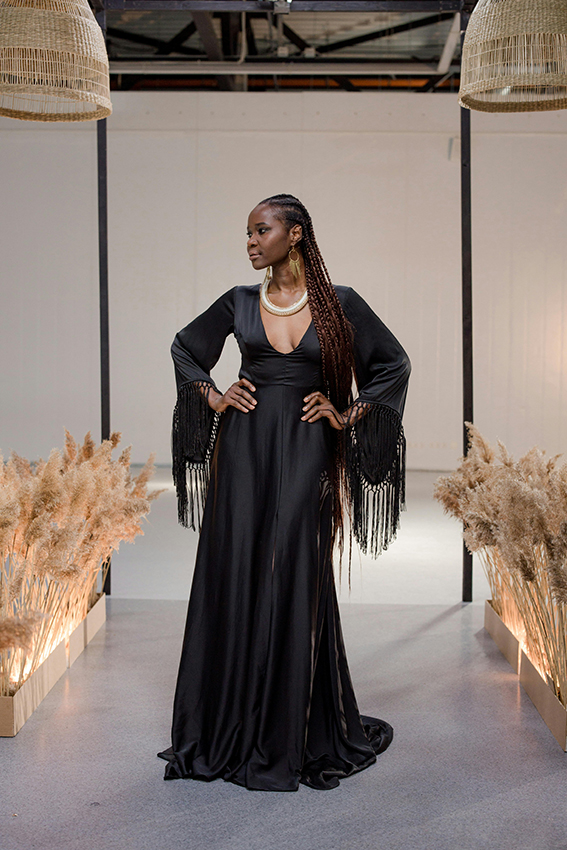
Hippie Dresses on the Runway
Do you love fashion? Then you know that several famous designers have embraced the hippie style and incorporated elements of it into their collections. Including the creation of hippie dresses.
Each designer brings their own unique interpretation to hippie fashion. Incorporating elements of nostalgia, craftsmanship, and individuality into their designs.
Here are a few examples:
Anna Sui:
- Known for her eclectic and bohemian-inspired designs, Anna Sui often incorporates elements of hippie style into her collections. Her designs feature whimsical prints, flowing silhouettes, and a vibrant color palette, capturing the free spirited essence of hippie fashion. Sui’s creations often include maxi dresses with intricate patterns and retro-inspired details. Evoking a sense of nostalgia for the 1960s and 1970s counterculture.
Etro:
- People renowned the Italian luxury fashion house Etro for its bold prints and bohemian aesthetic, making it a natural fit for hippie-inspired designs. Etro’s collections often feature flowing maxi dresses adorned with intricate paisley prints, floral motifs, and ethnic-inspired patterns. These dresses exude a laid-back elegance and effortless charm that aligns with the spirit of hippie fashion.
Zimmermann:
- People know the Australian fashion label Zimmermann for its romantic and feminine designs with a bohemian flair. The brand often incorporates elements of hippie style into its collections. Including hippie dresses with delicate lace detailing, tiered ruffles, and vintage-inspired silhouettes. Zimmermann’s designs capture the whimsical and carefree spirit of the hippie movement, offering a modern interpretation of retro-chic fashion.
Free People:
- Rather than a single designer, Free People embodies the essence of bohemian style, and people recognize the brand for its hippie-inspired clothing, including dresses. The designs feature flowing silhouettes, eclectic prints, and vintage-inspired details, evoking the laid-back and carefree vibe of hippie fashion. Their hippie dresses often incorporate elements such as embroidery, crochet, and fringe. Reflecting a love for handmade and artisanal craftsmanship.
Isabel Marant:
- People celebrate French designer Isabel Marant for her effortlessly cool and bohemian-chic aesthetic. Marant’s collections often include hippie-inspired dresses with relaxed silhouettes, earthy tones, and subtle embellishments. Her designs exude a sense of casual luxury and understated elegance, capturing the relaxed and carefree attitude of hippie style.
Find Your Own Perfekt Hippie Dress Style
Take inspiration from both celebrities and runwayshows, but try to find your own perfect hippie dress style. What makes you loose your breath, or make your heart tick a little bit faster? Tassels, Frings, long flowy dresses, a hippie vest, colorful gypsy clothing, or a pair of flared jeans? Mix and match, and combine with hippie accessories, a cool hippie makeup and the right boho bag to complete your hippie girl look 🙂

